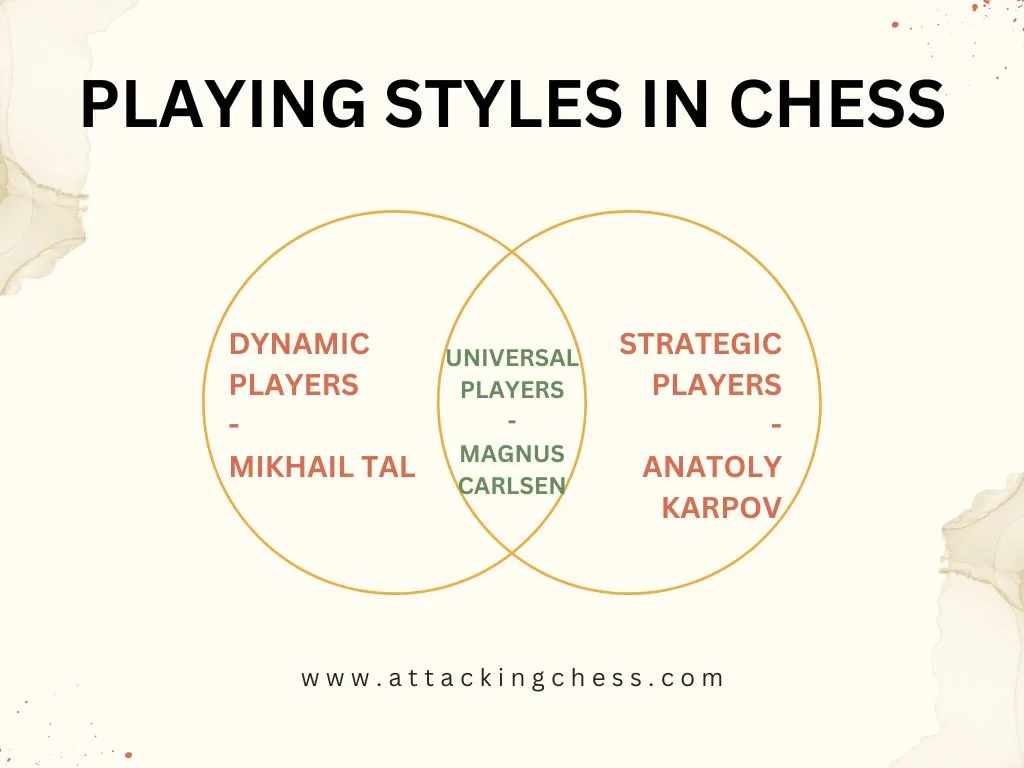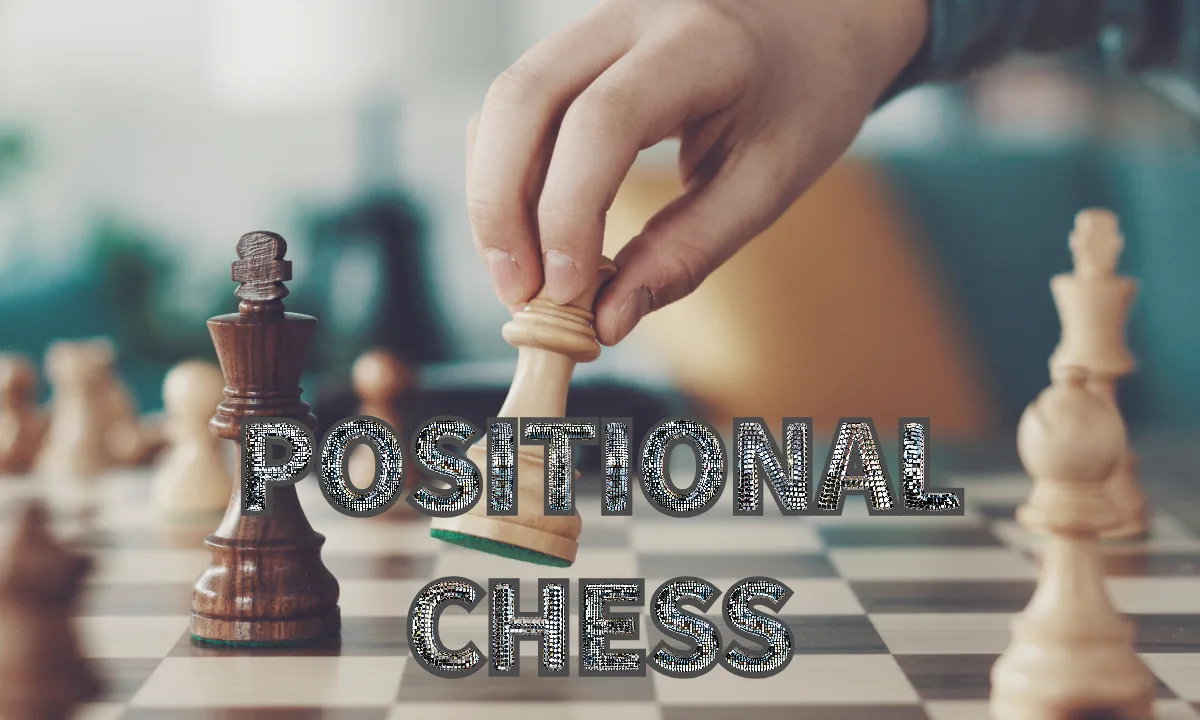Chess isn’t just a game of quick tactics and flashy combinations—it’s also about the quiet, methodical work of positional play. If tactics are the fireworks that light up the board, positional chess is the steady groundwork that ensures the fireworks happen in your favor. Understanding this balance is what separates the good players from the great ones.
Positional vs. Tactical Chess
First, let’s clear up the confusion between tactical and positional chess. These two approaches to the game are like the yin and yang of strategy. You need both to succeed, but they operate in fundamentally different ways:
Tactical Chess: The Direct and Immediate Approach
Tactical play is about energy and momentum—using threats, sacrifices, and combinations to seize the initiative or secure a decisive advantage. It’s short-term and often explosive, with moves that demand immediate answers. Mikhail Tal is one of the best players when it comes to tactical chess.
Positional Chess: The Long-Term, Building-Up Approach
Positional play is quieter, more patient. It’s about shaping the board in your favor over time by:
- Improving the placement of your pieces.
- Limiting your opponent’s options.
- Restructuring the pawn skeleton to create lasting advantages.
Think of tactics as a sprint and positional chess as a marathon. One gets you quick results, the other ensures you’re in it for the long haul. Anatoly Karpov was once called a positional maestro, with a playing style as opposed to Tal.
The Key Pillars of Positional Play
Let’s dive into the essence of positional chess, which revolves around three critical ideas:
1. Creating, Fixing, and Eliminating Weaknesses
- Create: Push your opponent into awkward positions. Force their pawns to overextend or their pieces to take up bad posts. A backward pawn or an isolated pawn can become a long-term liability.
- Fix: Once a weakness is identified, make sure it stays that way. For example, locking an opponent’s weak pawn on a square where it can’t move or be defended effectively.
- Eliminate: If you’ve got a weakness of your own—like a misplaced bishop or a vulnerable pawn—don’t ignore it. Fix it before it becomes a target.
This principle is all about the “push-pull” dynamic: pressuring your opponent’s flaws while minimizing your own.
2. Preventing Your Opponent’s Ideas
Good positional chess isn’t just about what you want—it’s also about what you don’t want your opponent to do. Sometimes the best moves are the ones that stop your opponent’s plans in their tracks.
For example, if your opponent is eyeing a strong square for their knight, play a pawn move to take control of that square. If they want to expand on the queenside, position your pieces to stifle that push. Positional chess is a game of subtle preemptive strikes.
3. Harmonizing Your Pieces
Every piece on the board has a job to do. The hallmark of great positional play is making sure each piece is actively contributing to a common goal.
- Start by identifying your worst-placed piece. Ask yourself, “What is this piece doing, and how can it do more?”
- Avoid redundancy. Two rooks lined up on an open file? Perfect. Two knights staring at the same pawn? Not so much. Knights are the strongest when they sit next to each other.
- Seek synergy. Your pieces should work together like instruments in an orchestra, creating a harmonious position that supports your strategy.
Dynamic vs. Strategic: The Dual Mindsets
In any position, you’ll need to balance dynamic (immediate) and strategic (long-term) thinking. Here’s how these approaches complement each other:
- A dynamic player sees potential energy in the position and looks for ways to unleash it through tactical opportunities.
- A strategic player takes stock of the overall position, strengthening weak spots and laying the groundwork for future attacks.
- An universal player, like Magnus Carlsen. He is often compared to Karpov in terms of style, but he brings a more well-rounded approach to the board. He’s not only a fantastic defender but also excels as an attacker, counter-attacker, and technician.

The best players know when to shift gears. Positional play might create the conditions for a devastating tactical strike, or a tactical flurry might leave you in a strong positional setup. It’s all about timing.
Practical Tips for Improving Positional Chess
1. Study Pawn Structures
Pawns are the soul of chess. Understanding how different pawn formations (isolated, doubled, passed) shape the game is critical to mastering positional play. Read more about pawn structures here.
2. Analyze Master Games
Watch how legends like Capablanca, Petrosian, and Karpov slowly grind down their opponents with impeccable positional play. Look for the patterns in how they restrict, improve, and coordinate.
3. Always Ask: “What’s My Worst Piece?”
This simple question can guide your positional decisions. If you’ve got a bad bishop, reposition it. If your rook isn’t doing anything, find an open file for it. Incremental improvements add up.
4. Stay Flexible
Don’t get so caught up in long-term plans that you miss immediate tactical opportunities. Positional play is the art of preparation, but it’s worthless if you can’t capitalize on your advantages when the moment arises.
Why Positional Chess Matters
“In chess, I am pretty universal, but definitely leaning towards positional rather than tactical play, ” said Carlsen to ‘The LeBron James of soccer’ Christian Pulisic.
Positional chess teaches patience, foresight, and control. It’s not about dazzling your opponent with brilliance (though that’s fun too)—it’s about wearing them down, outthinking them move by move, until they’re left with no good options.
So, the next time you’re playing, take a step back. Don’t just think about the next move—think about the position you’re building for 10 moves down the line. That’s the magic of positional chess: it’s a slow burn, but when the fire finally ignites, it’s unstoppable.
I’m the senior editor of Attacking Chess, a keen chess player, rated above 2200 in chess.com.


1 thought on “Positional Chess: The Art of Building a Winning Foundation”